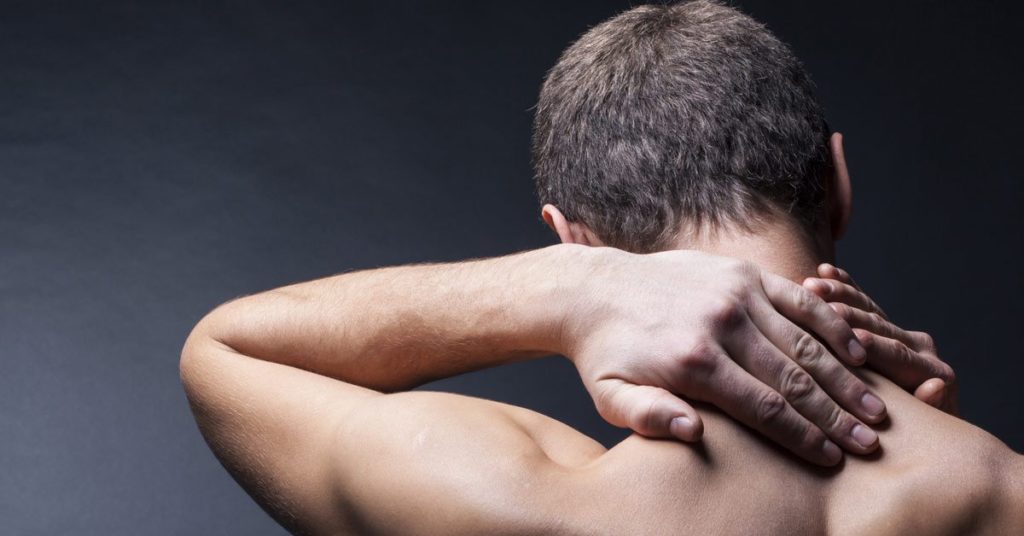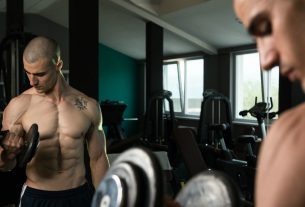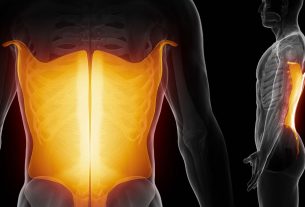Muscle pain is also a well-known phenomenon for top athletes. Earlier, we wrote about how muscle pain can occur and how muscle pain, if you’ve been affected, you can reduce . Chances are that you are dealing with so-called trigger points . We all have them and we all suffer from them to some degree. In this article we will explain what trigger points are and why it is wise to keep an eye on them. We also give you various trigger point exercises to prevent or soothe painful trigger points.
MYOFASCIAL TRIGGER POINTS
Popularly, myofascial trigger points are also referred to as “muscle knots.” People sometimes describe pain that is formed by trigger points as ‘a knot in my neck/back/hip’. Recognizable?
A trigger point is not a real knot, but can feel that way because it is at a certain point. When the trigger point is on the surface of the muscle, you can even feel the trigger point as a small lump.
WHAT IS A TRIGGER POINT?
A trigger point is a part of the muscle that is tensed. It feels like a small lump in the muscle. When you press on the trigger point, this can really hurt. Trigger points can occur throughout the body and it is also possible to suffer from multiple trigger points at the same time.
The pain of trigger points can be present in two different ways:
- Only if you push the trigger point;
- As constant pain in the muscle.
HOW DOES A TRIGGER POINT DEVELOP?
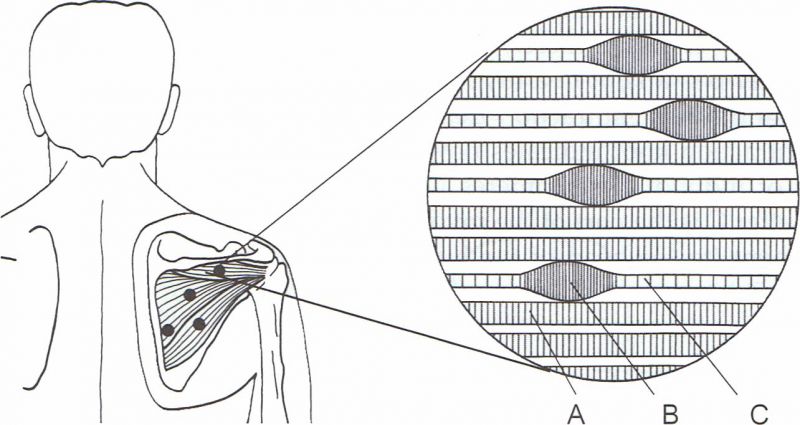
To know where the pain comes from, it is good to look at the development of a trigger point.
When you move your muscles, you will stretch them one minute and contract them the next. When the muscle is often stretched and then contracted again, trigger points can develop.
A trigger point is an overloaded part of the muscle. When you move, the muscle fibers (A) are stretched and contracted by the pumping motion of the sarcomeres (structures in the muscle that are used for contraction). A trigger point occurs when a sarcomere cannot let go of the contracted state.
At this point, a kind of knot of contracted sarcomeres remains in the muscle fiber (B). This knot ensures that the muscle fiber on both sides of the knot is stretched extra (C). Several of these nodes together form the trigger point.
BUT WHAT EXACTLY HURTS SO MUCH?
Because there is a knot in the muscle fiber, the rest of the fiber is stretched and can no longer relax. This creates a nagging feeling. In addition, pain arises because the muscle fibers can no longer receive sufficient blood due to the contracted state. This in turn results in waste products accumulating in that area.
Because the trigger point causes stretched muscle fibers, it is possible that you can feel the pain of a trigger point in a different place in the body. This is called distracted pain. Also, the fact that the muscle fibers continue to pull can cause pain in the attachment points of tendons.
The delivery of a pain signal also causes the brain to avoid the muscle. After all, using it hurts. Because you start using the muscle less, its stiffness only increases.
PREVENTING TRIGGER POINTS
Trigger points are annoying and painful knots in your muscle. If this bothers you, you can have something done about it through various methods. Especially if you have been walking around with it for a long time, it is wise to have it looked at by a professional.
It is of course much nicer to prevent the trigger points in the first place. That is why we explain below 5 different exercises that you can do before or after training to prevent the formation of trigger points. Especially if you are a strength athlete and make a lot of repetitive movements, it is good to pay attention to this.
We do mention that even if you do these exercises, there is always a chance that you will still get trigger points. So always keep a close eye on your body.
TRIGGER POINT EXERCISES: THIS IS HOW YOU PREVENT THOSE PAINFUL KNOTS
As mentioned before, trigger points can occur throughout the body. Below you will therefore find different exercises for different parts of the body, with which you can try to prevent or relieve trigger points.
You do need a massage ball and/or foam roller for this, because you have to massage deeply to prevent or reduce trigger points. You may feel pain due to the pressure during the massage, but this is ‘good’ pain. You feel this pain because you hit your muscle well and deeply.
EXERCISE 1: THE TRAPEZIUS MUSCLE ( MUSCULUS TRAPEZIUS )
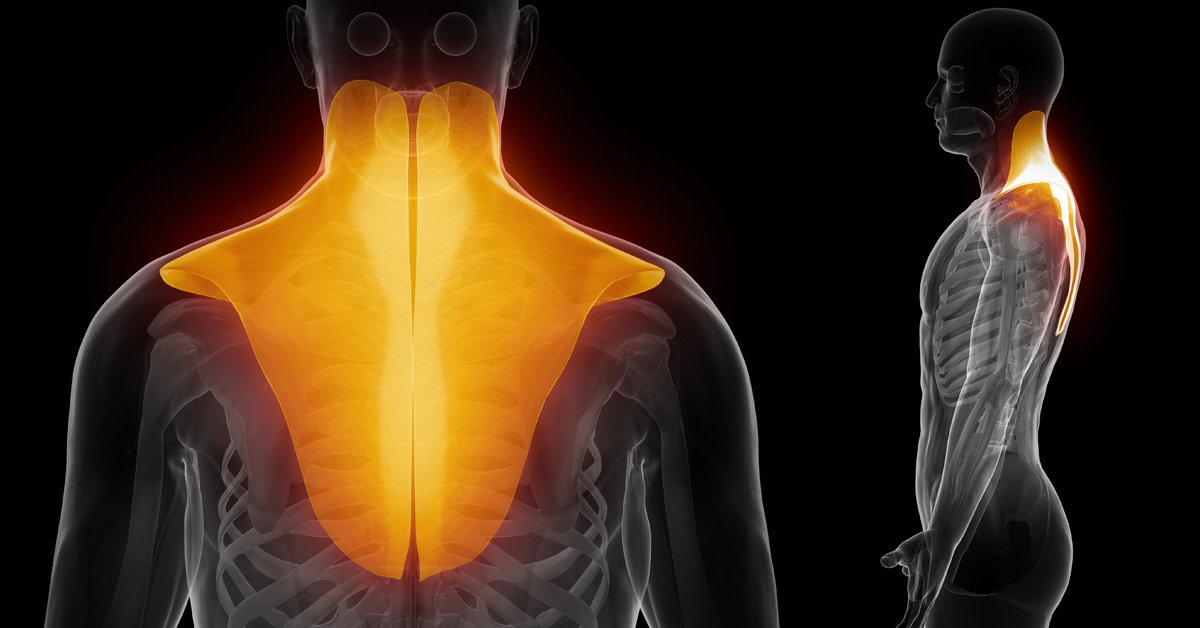
The trapezius muscle runs from the neck to the top of the back and is in the shape of a diamond. Many people who suffer from their neck, shoulder or back suffer from this muscle. Trigger points can also be located here. Also note here that it is important to massage the entire muscle. You may only be bothered by the back of your neck, but that could also mean that the trigger point is lower on the back.
To properly massage this muscle, grab your massage ball and look for a wall. Then place the ball between the wall and the upper part of your trapezius muscle (at shoulder height).
You can perform different movements to massage the muscle:
- Move your body away from the ball (wall) and turn back.
- Apply pressure by extending your arm (the arm on the side where the ball is located) when you are standing with your back to the wall and the ball is on the trapezius muscle. This way is especially nice for places where you just feel some irritation from a trigger point.
- A third option is that of the hug. Stand with your back against the wall with the ball on the muscle. Then pretend you’re giving yourself a hug. Keep your arms like this and slowly rotate the muscle over the ball.
EXERCISE 2: THE SHOULDER ( DELTOID MUSCLE )
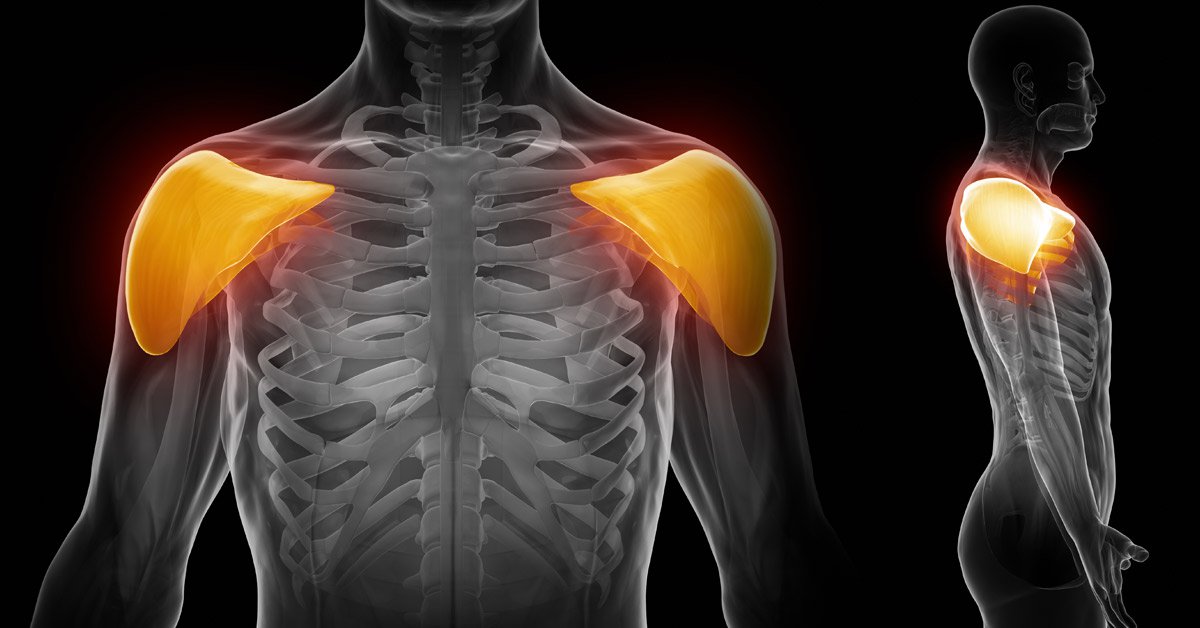
With this exercise you massage the deltoid muscle. That’s the muscle that lies on the outside of your shoulder, at the top of the arm.
Again, you use the massage ball or tennis ball to massage the muscle, using a wall that you can stand against. To start, stand against the wall with the ball between the wall and your shoulder.
Then you make circular movements and make sure that the ball rolls over the muscle. Remember to turn from front to back and apply pressure while rolling. If you don’t apply pressure, you won’t be able to massage the muscle deeply enough.
